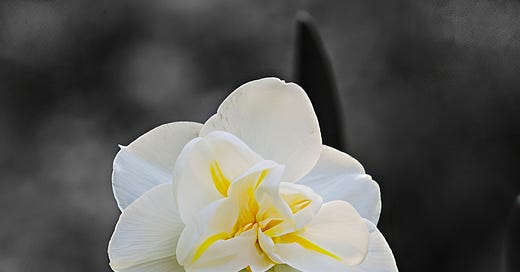The title is heresy, I know, but read on. Life in the garden is never simple:
Today, just a brief post for my gardening readers - nothing too long as the weather and garden are calling me to be outside doing useful stuff, but an important matter … please do have a read of this article. The author writes from southern Ontario so not too distant from me.
https://www.gardenmyths.com/dandelions-important-bees/
Quote: How important are dandelions to bees, and which bees are we talking about? Is it their first food? Do bees actually use the pollen and nectar from dandelions?
Just because social media says its true, does not mean it is. Lets uncover the truth behind this craze to save the dandelions.
And furthermore …
There is also evidence that once a bee is conditioned to dandelions, or any other flower, they will stick to sourcing pollen from it for a few days. Even if fruit tree pollen is available, they ignore it, once conditioned on dandelion pollen. An abundance of dandelions may in fact keep bees from the fruit tree pollen, which is a more nutritious source of pollen … If we make it easy for honey bees to collect poor quality pollen by creating a lawn full of dandelions – that is what they will collect. A lawn of dandelions keeps bees away from more nutritious pollen … Keeping dandelions may keep bees from using fruit tree pollen which is a better quality of pollen. In this way dandelions may actually be harming bees … A lawn full of dandelions is better for bees than a weed free lawn, but not nearly as good as a garden with a variety of plants and no dandelions.
So the message I want to share is this:
Anything is better for bees than a monoculture lawn.
Bees do use dandelion pollen/nectar BUT are thereby distracted from using pollen from much more nutritious flower sources which we should provide for them
Tree flowers are especially valuable to bees during dandelion season
In other words - dandelions are good, but we can do much better.
While I am here, and on a related topic:
During his (Douglas Tallamy) talk, he mentioned his opposition to the concept of No Mow May. Not the No Mow part, the May part. Tallamy is not a fan of those great ecological wastelands we create when we maintain lawns. What he further objects to is providing pollinator habitat for a single month and then snatching it away, thus increasing the odds that bees we claim to be helping will struggle.
When your lawn—and everyone else’s—gets mowed on June first, it drives the bees farther afield in search of pollen, wasting their energy and weakening them in the increasingly adverse environment we humans have manufactured. In addition (though Tallamy didn’t mention it), the high grass provides shelter and hiding places for all manner of native critters. And in the absence of mowing, valuable volunteer plants arise.
That is from this post:
That’s it for today - the garden awaits





People have so much to learn about bees and dandelions. This is just another example of human blindness. Whether we are born with such blind spots and develop them to navigate our over stimulating environs .... I will let someone else figure out. Meanwhile, I am loving young May dandelion greens in my salads and adding them finely chopped along with Parsley and Mint to top my soups and such. As to bees, they have a whole world of behaviors between their many varieties that keep them occupied in ways that few humans seem to see. Some live only a few weeks while their preferred flowering plant is available in the very early spring. While others commit war on any intruding bee they happen upon. Others sleep overnight in their favorite flowers such as comfrey, or delphinium to get an early start on the day. I tend to high mow alternating areas of my large lumpy lawn composed of many types of grasses, clover, wild strawberry, many types of dandelions, and many other low growing ground covers such as sheep's sorrel and chick weed. I try to mow when the bees are not likely to be out (early morning or late evening and grey cool days) and as I say to alternate portions being mowed to always have something they like in bloom. As a kid, a neighbor woman paid kids a penny a pop for dandelion flowers to make dandelion wine. And some kids were paid to separate the yellow petals from the greens. We were too young to taste the treat, but I heard that it was enjoyed by some adults.
Full agreement on the importance of your post. I live in a small subdivision that requires lawn care. In summer, twice per month. Lovers of monoculture are on board. I take a couple steps to compensate. No use of any insecticides or pesticides. Supporting (water) a bower of wonderful gardenias that a previous owner planted. Planting of native species. Perennial flowering species that flower throughout the summer, along with native shrubs and trees that also flower. As understory plants, watering is almost never required.
Thanks for promoting awareness and action.